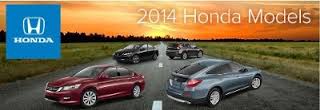Save Time On Your Accord By Removing One Bolt:
Before removing the caliper guide pins on the seventh generation Accord, remove the bolt that holds the front brake hose bracket on the knuckle before you start a brake job. It makes it easy to hang the caliper out of the way and service the pads and caliper bracket.
Click or Pop When Applying The Brake Pedal on Accord:
Got an Accord (2003-’04, I own one of these) in your shop that clicks or pops when you apply the brake pedal? The cause could be the brake pedal position switch. The switch plunger doesn’t fit squarely into the switch casing. When you press the brake pedal, the plunger rubs the side of the casing resulting in a ghastly noise. There’s a simple fix for this problem: Just turn the switch around so the connector lock now faces the 5 o’clock position.
Rear Differential On CR-V and Pilot:
A complaint often misdiag- nosed as a brake problem is a noise from the rear when turning in the popularCR-V and Pilot models. This turning noise at low speeds is actually coming from the rear differential. On these models, only the Honda “dual pump” oil can be used. Changing the oil will take care of the noise.
All Models: Stuck ABS Sensor
You have to be very careful with ABS sensors on most Hondas. If they’re stuck in the housing, it may be a better strategy to leave them in place and unplug them from the harness; and be careful with them as you work on the bench. Think about putting the job back together as you’re taking it apart. 
All Models: Replace Brake Hose If Caliper Is Over Heated
If you are replacing a caliper that has locked up and created a great deal of heat, you should also replace the brake hose. This is a good practice anytime, but particularly important with the Honda line as there have been some instances of the hose failing at the caliper fitting after being subjected to the extreme heat.
All Models: Never Compromise On Pads (This is the most important!)
Most late-model Hondas are designed to work with ceramic friction formulations, so it’s imperative that a similar friction material goes back on the vehicle. If an aggressive semi-metallic friction material is used, more heat could be transferred to the caliper piston, making it possible to boil the brake fluid.
The problem becomes even worse if you use a cheap brake pad set that does not include a set of shims. Honda engineers put a lot of effort into their shim designs to stop the vibrations in order for Honda vehicles to use a lighter caliper and knuckle to increase gas mileage and improve ride quality.
If you really think you can out-engineer a bunch of Honda engineers with a cheap shim and tube of brake lube, you may have a comeback in the near future.
